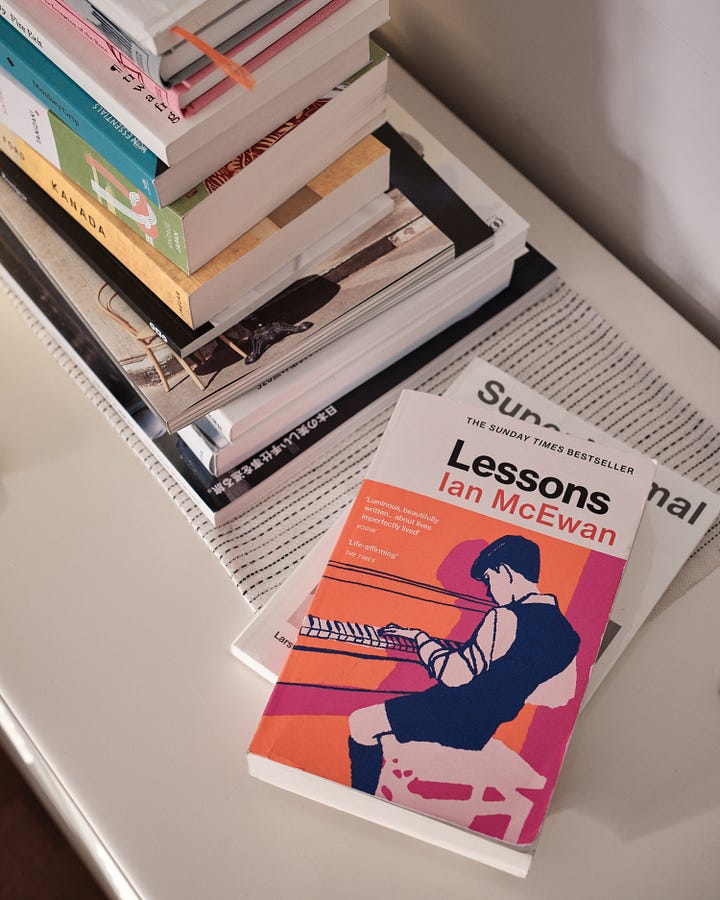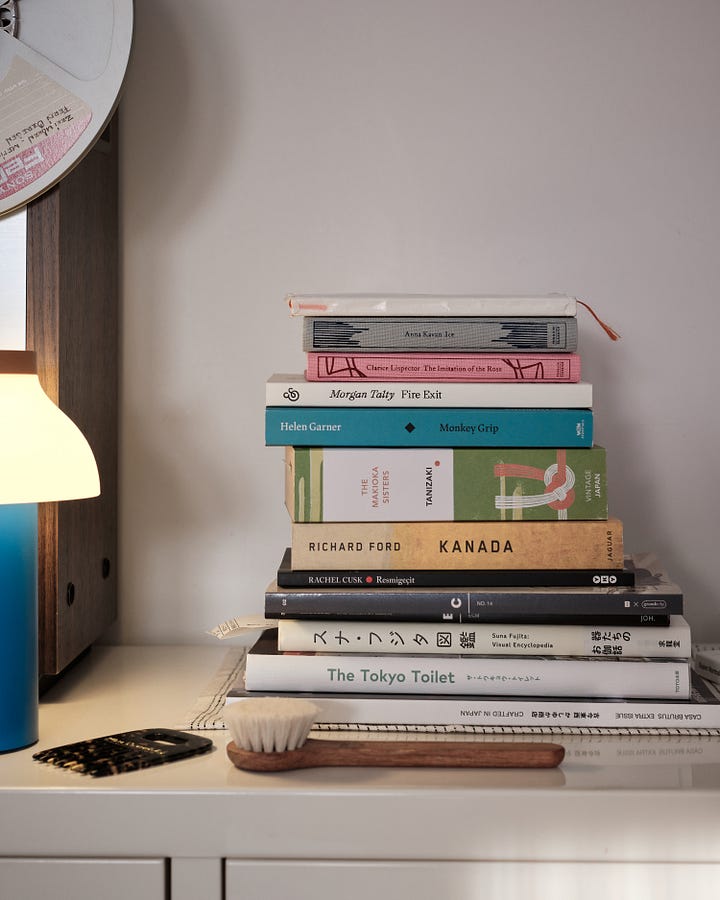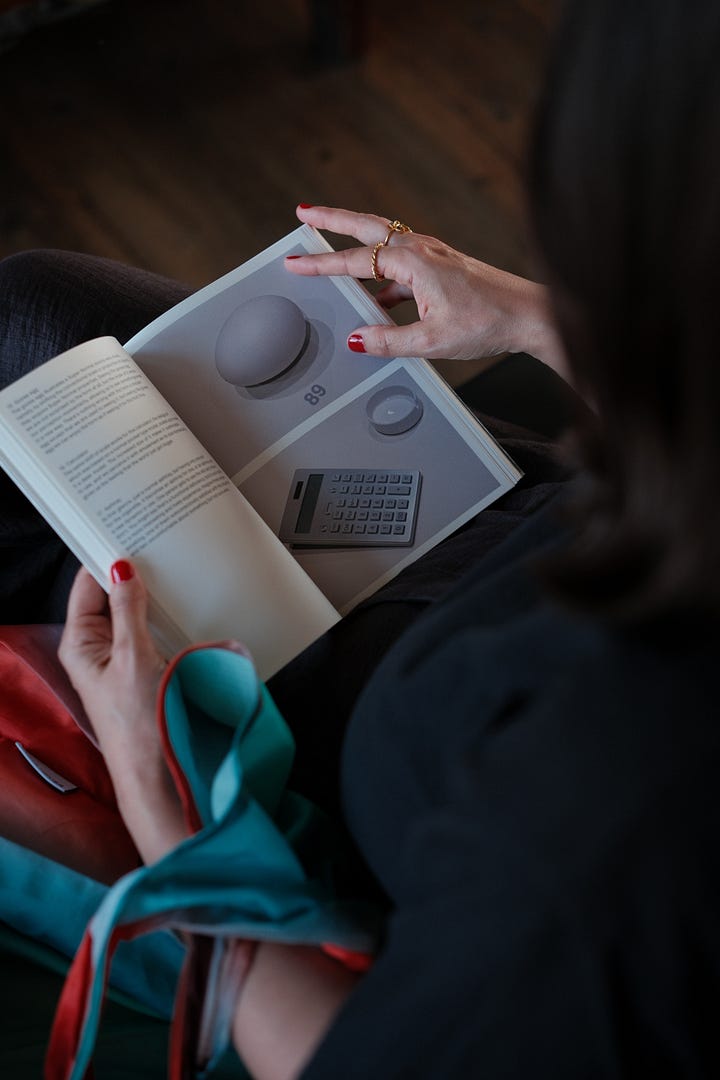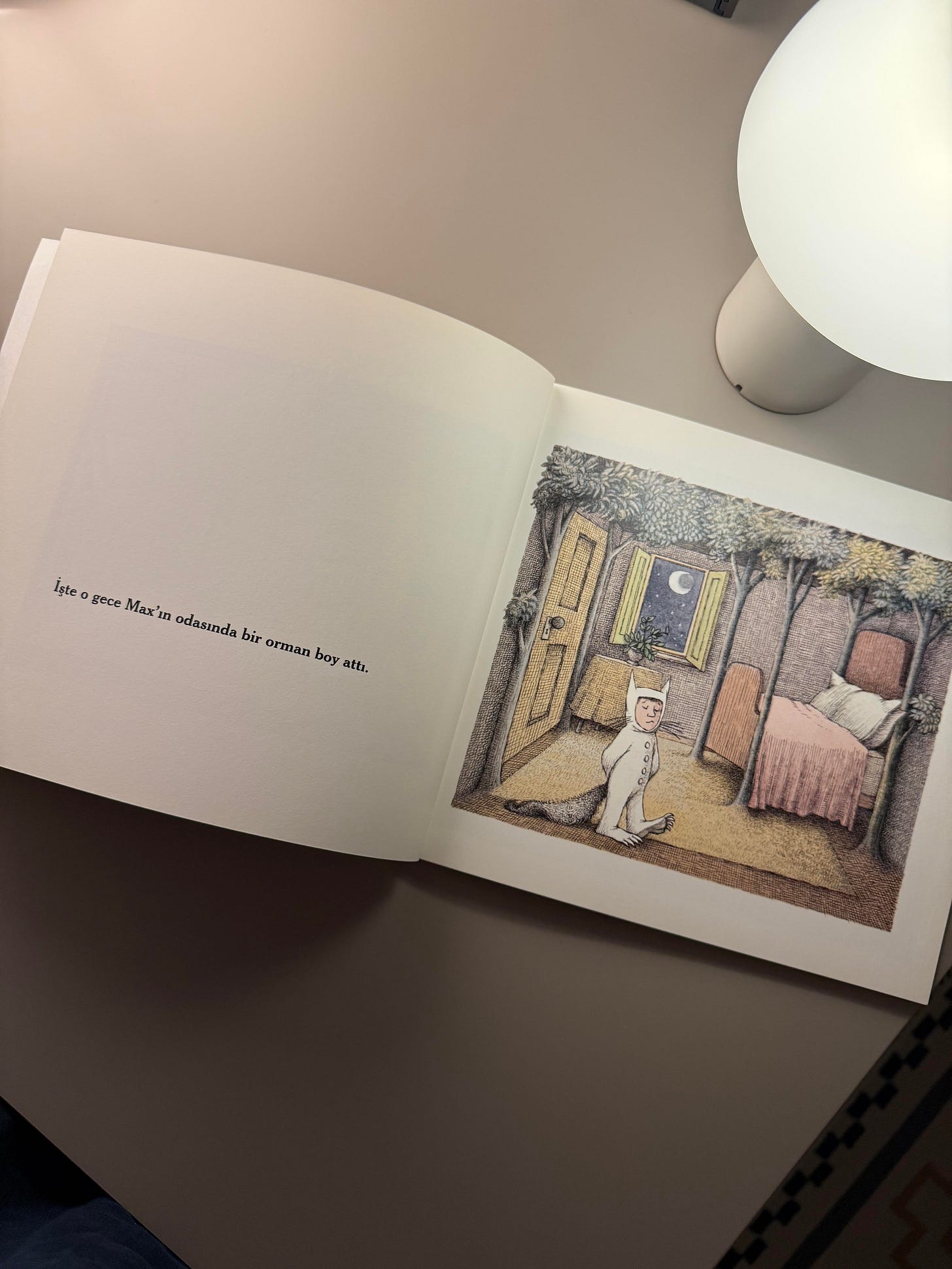Fellow Readers #5: Ipek Soran, Istanbul
Fellow Readers is all about highlighting a new book lover from our community, their current projects and favourite reads.
While Instagram can sometimes feel like a tiring place for endless doom scrolling, it has also helped me meet some wonderful and inspiring people from around the world. One of those people is İpek Soran, an experienced editor, translator and publishing coordinator (for the children’s book publisher Can Cocuk) from Istanbul who loves books – from children’s stories to non-fiction.
İpek and I have been following each other for a few years now, bonding over our mutual love for design, architecture, books, movies, and all things Japan. She has not only a great eye for beautiful details and photography but also shares inspiring recommendations – especially when it comes to books and films.
This past April, we finally met in person during Milan Design Week, and I instantly felt close to İpek – as if I was meeting an old friend. It’s funny how social media can create space for genuine connection and friendship, even before you've met in real life.
So, I’m happy to introduce you to İpek with some questions below. Thanks for your contribution, İpek! <3
—Deniz
What’s next on your reading list? Is there anything you’re especially looking forward to?
Ipek Soran: I generally like to balance nonfiction with fiction, so right now I’m reading two books in parallel: Lessons by Ian McEwan and Super Normal by Jasper Morrison & Naoto Fukasawa. Being an insatiable reader and avid lover of magazines, I also have quite a stack of books and mags on my nightstand. Here lies the brave pile of books patiently waiting their turn: Fire Exit by Morgan Talty, Monkey Grip by Helen Garner, Ice by Anna Kavan, The Imitation of the Rose by Clarice Lispector, Canada by Richard Ford, Parade by Rachel Cusk, The Makioka Sisters by Tanizaki, and Tokyo Toilet Project.
To be honest, I’m excited about all of them, but there’s one I’m especially eager to return to: In Search of Lost Time. I started reading Proust as a pandemic project, but it quickly became a lifelong reading plan! I finished the fifth volume, The Prisoner, but then got distracted and lost interest for a while. For the past two years, I’ve been waiting for the motivation to dive back in and finish the last two volumes – and I hope that inspiration comes soon.
What captivates me most about Proust’s work is his extraordinary exploration of memory and time, and how past experiences continuously shape our present selves. His rich, lyrical prose invites a slow, meditative reading experience that reveals new layers each time I return to it. Beyond that, his deep psychological insight into human emotions and social relationships makes the novel feel like an intimate journey – one that seems to evolve with me over time.


As a children’s book editor and translator which titles have a special place in your heart – whether from your work or personal life? Are there any you think every adult should read too?
Ipek: There are many books I hold dear, but if I had to choose one, it would be Where the Wild Things Are by Maurice Sendak. I discovered this wonderful picture book in my early twenties and always wished I’d read it as a child – though better late than never! Sendak’s unique pen-and-ink crosshatched illustrations are so vivid and full of motion that, over time, I’ve come to know every page by heart. One page in particular stands out: where little Max watches a forest grow in his room until it becomes a whole world.
Where the Wild Things Are is a brilliant guide for kids to handle their wild emotions and embrace their rebellious side. It reminds us that imagination, adventure, and even the messy parts of growing up are essential. The book also shows that it’s okay to feel angry or upset – as long as you find your way back to what’s good.
What I love most about Sendak’s work is how he celebrates imperfect, mischievous kids who aren’t afraid to feel deeply or dive into strange, unknown worlds. They lose control, find it again, and make peace with themselves – just like we all try to do.
And here’s a fun insider fact: as the Turkish publisher of Sendak’s books, we sometimes get complaints that Where the Wild Things Are is scary. But honestly, I’ve never seen a child frightened by the wild things. Interestingly, the book was even challenged and banned in some US schools and libraries in the ’70s and ’80s because adults found its themes too intense. Funny enough, it’s almost always the adults – parents or teachers – who raise these concerns, not the children themselves.
Are there any authors you find yourself returning to over and over again – for comfort, inspiration, or simply joy?
Ipek: That’s a great question – thank you for asking. Without hesitation, there are two authors I keep returning to, and I believe I always will. They share a common thread: a rather pessimistic view of the human condition. That actually resonates with me, because in both literature and cinema, I’m drawn to themes like a depressing society, isolation, human misery, and an unrelenting focus on the bleak.
The first author I return to is Karl Ove Knausgaard, specifically his six autobiographical novels titled My Struggle, and his Seasons Quartet series, which is a collection of short prose and diaries he wrote for his then-unborn daughter. What draws me back to Karl Ove’s writing is how it helped me confront years of repressed emotions and make peace with the pains of growing up.
The other author who has had a deep influence on me and whom I keep coming back to is Thomas Bernhard. It’s hard to put into words the impact he’s had on me, but I’ll try. One of my all-time favorite reads is his masterpiece Correction – an unforgettable reflection on the struggle between the desire for perfection and the harsh reality that it can never be fully achieved. The novel’s protagonist, Roithamer, embodies this tension in his obsessive quest to create the perfect architectural correction, which ultimately highlights the impossibility of perfection itself. And also in terms of style, it’s the most challenging text I’ve ever read. After finishing Correction for the first time, I was completely mindblown to realize I had been ‘completely changed’ by a ‘text.’ I would never have imagined such a thing was possible. Actually, I’m still not sure if anyone can ever truly understand it as a whole.
Do you have any reading rituals or ways you like to annotate your books?
Ipek: I always prefer silence when reading. As long as I have quiet, I don’t need anything else. But since finding the perfect peaceful spot is rare in a buzzing city like İstanbul, I always carry my noise-cancelling headphones with me. I honestly think they might be one of the greatest inventions of the century. :)
When it comes to annotating, I used to underline sentences carefully with a ruler. However, I’ve since given up on that habit because it took too much time trying to keep the lines neat and flawless. I guess I’ve become a more carefree and less patient reader over time, so now I’m less focused on neat annotations.
Oh, and I really hate regular bookmarks! I usually use a receipt, a ticket, or a scrap piece of paper, but my personal favorite? Dogears. Dogears are the best.
What's your favorite spot to read in İstanbul?
Ipek: My favorite spot to read in İstanbul is the morning ferry I take twice a week. It’s a cross-continental commute – from the Asian side, where I live, to the European side, where my office is – and it takes about half an hour. It’s the perfect amount of time to focus on my reading, headphones on, usually listening to my reading playlist filled with pieces by Bach, Debussy, Schubert, Ryuichi Sakamoto, Philip Glass, and Nils Frahm. Sometimes, if I want to treat myself – especially on winter days – I bring along a cup of coffee.











